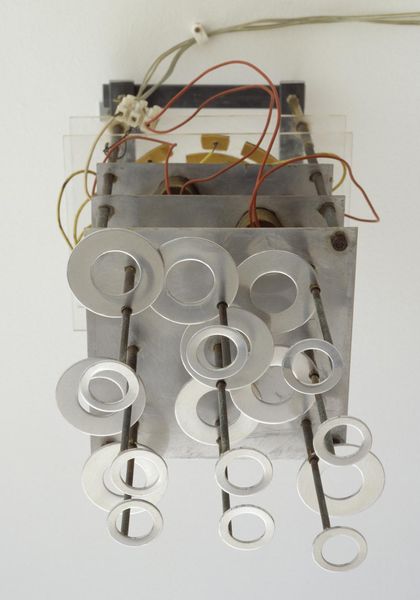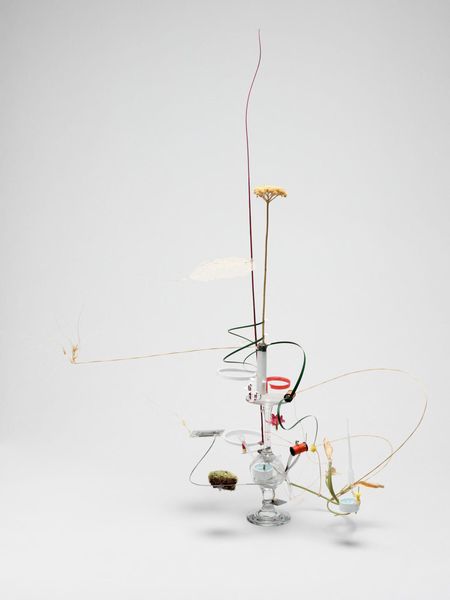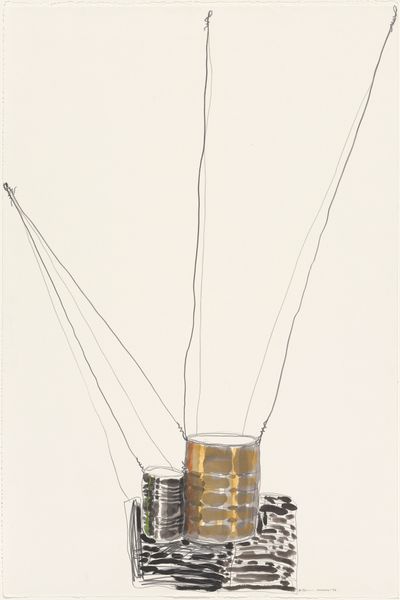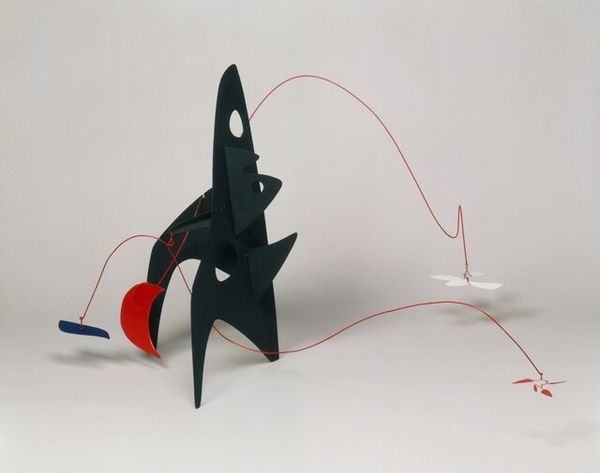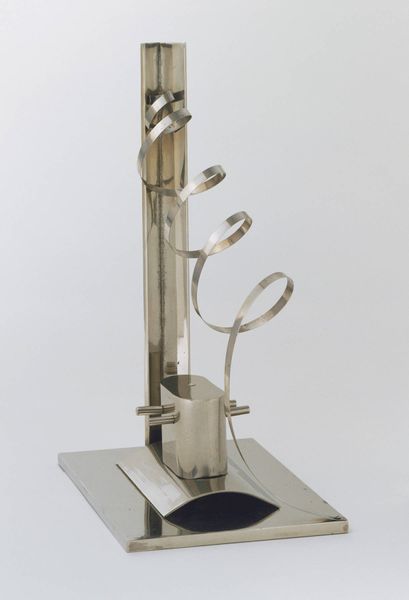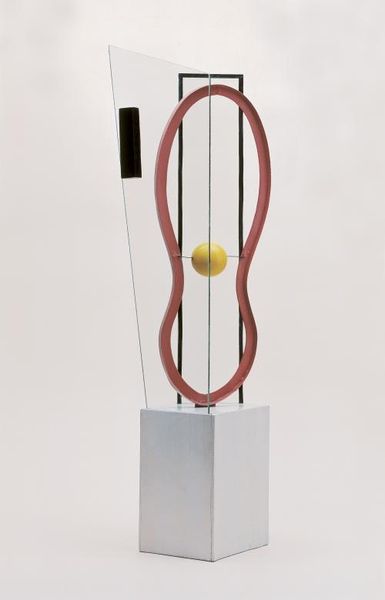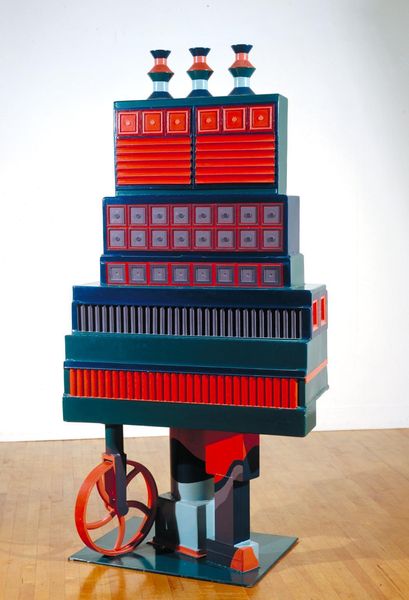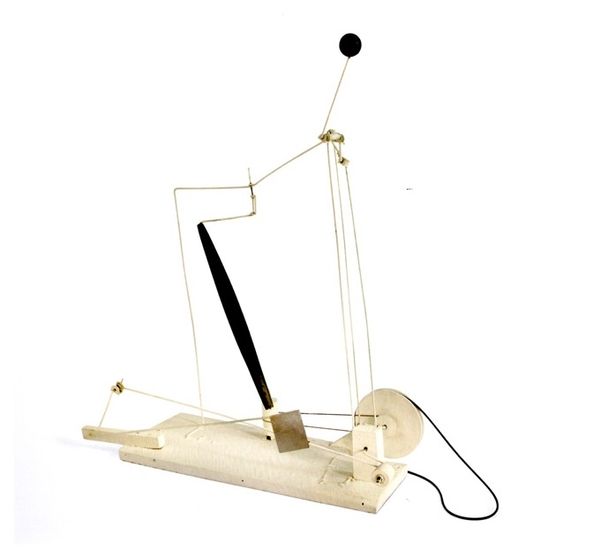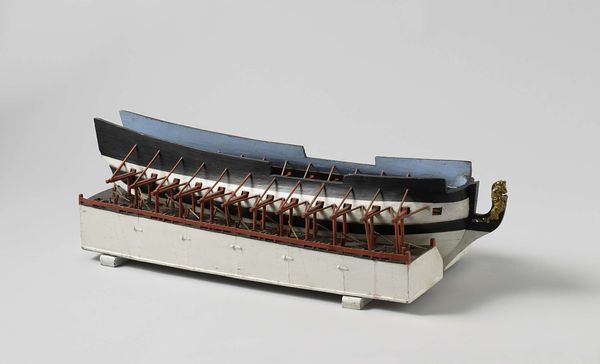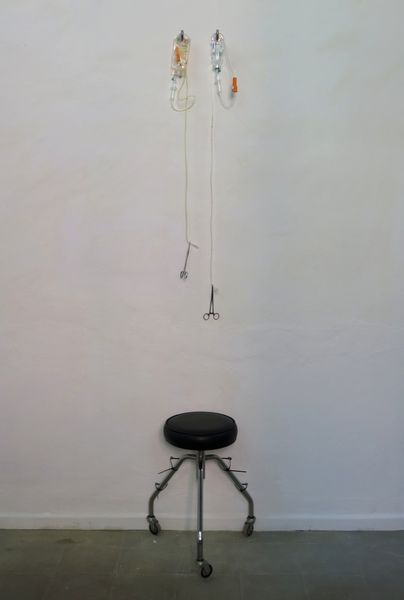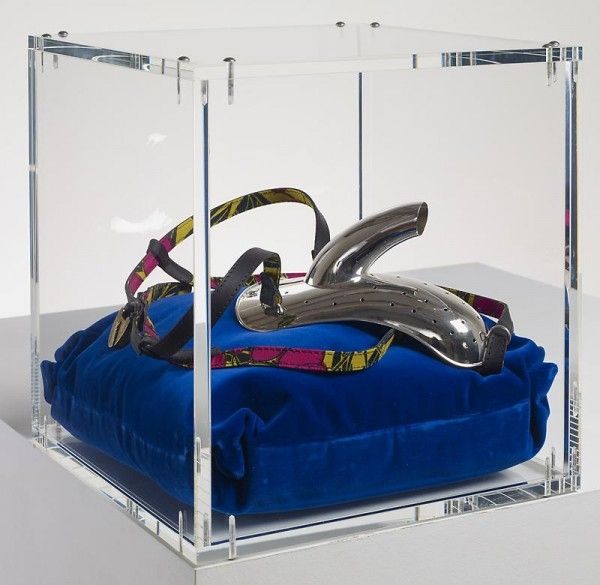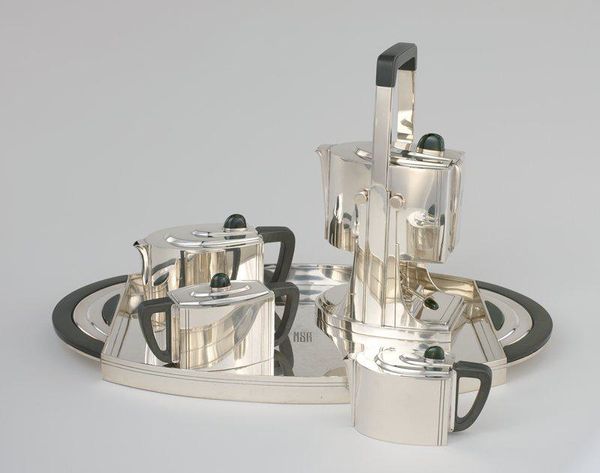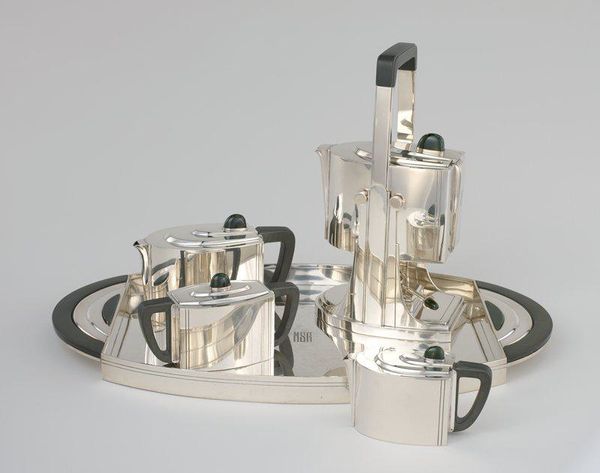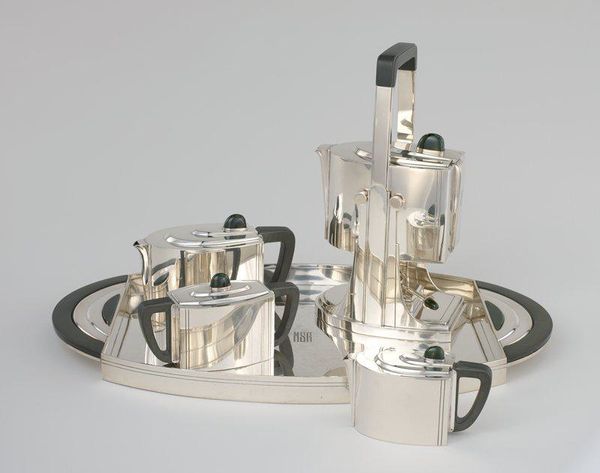
Car Door, Ironing Board and Twin-Tub with North American Indian Head-Dress 1981
0:00
0:00
Dimensions: displayed: 1865 x 2830 x 1570 mm
Copyright: © Bill Woodrow | CC-BY-NC-ND 4.0 DEED, Photo: Tate
Curator: Bill Woodrow, born in 1948, created this assemblage titled "Car Door, Ironing Board and Twin-Tub with North American Indian Head-Dress." What are your initial thoughts? Editor: Stark. It's a strange coming-together of discarded domesticity and appropriated cultural symbols. The materials look scavenged, almost like remnants of a forgotten age. Curator: Precisely. Woodrow is known for transforming waste materials into potent social commentary. The juxtaposition of household items with the headdress invites us to consider issues of consumerism, cultural appropriation, and identity. Editor: The means of production are integral here, aren't they? The transformation of scrap metal speaks volumes about labor and the cycle of consumption. It challenges the hierarchy between art and craft. Curator: Absolutely, it reframes the narrative. The found objects become imbued with new meanings as they’re situated within a post-colonial discourse. The headdress, once a symbol of power, is reduced to material, a relic alongside the mundane. Editor: It's a powerful statement on the weight of history. Curator: Indeed. Woodrow forces us to confront uncomfortable truths about the legacies we inherit. Editor: A challenging piece that really makes you question what is valued in society. Curator: A vital interrogation of our relationship with objects and the narratives they carry.
Comments
tate 6 months ago
⋮
http://www.tate.org.uk/art/artworks/woodrow-car-door-ironing-board-and-twin-tub-with-north-american-indian-head-dress-t03355
Join the conversation
Join millions of artists and users on Artera today and experience the ultimate creative platform.
tate 6 months ago
⋮
This replica of a Native American head-dress was made from sheet metal taken from a car door, an ironing board and washing machine. A manufacturer''s logo is still visible on the top of one feather. ''The idea came from seeing a child''s toy head-dress and thinking about how far that image had travelled from its original form and place'', Woodrow explains. He was interested in the idea of a traditional, Native American culture confronting the trappings of consumer society, and the way in which many Native Americans now live a westernised life. The thin metal strips joining the objects together literally express this interweaving of two cultures. Gallery label, August 2004
